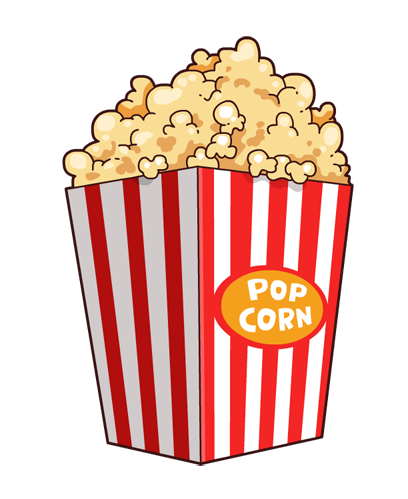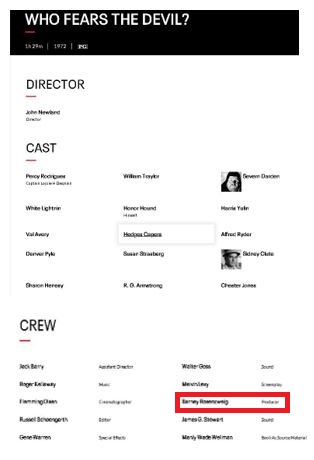My first job in show business was in the 1950s at a movie theatre seven miles east of Hollywood, California. I was in Junior High School, a teenage usher, ticket taker, and popcorn maker at the Boulevard Theatre… one of five such houses on Whittier Boulevard in what is today the barrio of East LA.
The pay was sixty cents an hour (a penny a minute) and all the popcorn I could eat.
We charged ten cents for a bag of what I bragged was the “best popcorn on the Boulevard.” And even at that rate, the net on that sale was something over nine cents, given that the most expensive item in the transaction was the cost of the bag.
Why does this come to mind over 70 years after the fact?
I recently attended Oppenheimer, my first venture out to a movie theatre since the advent of COVID. The movie is, of course, a giant smash but it was the popcorn stand that first got my attention. Afterall, this is an arena about which I have more than a little expertise.
There were two bona fide hits playing at the Miami Beach Theatre. Not surprisingly, Barbie was doing even better than Christopher Nolan’s flick about the invention and construction of the weapon that changed civilization as we had come to know it.
Hits are not like modest little films and documentaries. They are not even like middle-of-the-road romantic comedies or dramas. Usually the movie theatre gets to keep at least 50% of the box office gross… the more obscure the film, the higher the percentage for the theatre. It’s different with a hit.
It is not just the extraordinary amount of money that is coming into that theatre… it is the exceptional amount of money that is going out. Somewhere between 90 and 100% of the receipts at the box-office go to the film’s distributor, NOT the exhibitor. That’s the price a theatre owner pays to get folks into the theatre.
The reality is, if the distributors would let them get away with it, the theatre owner would let everyone come to the theatre for free. That’s how good the popcorn business is.
Charging dollars for a commodity that costs pennies…that’s a business. Have you asked a kid working that counter how much he makes? It is not that big a multiple over the penny a minute I was getting 70 years ago when you could buy a burger at a precursor of McDonald’s for between 10 and 15 cents. That bag of popcorn represents 98.5% pure profit. Same as it did back in the 1950s.
So, imagine my surprise the other day when I asked for a large bag of popcorn and was told they were “out”; that all that was left were the medium and small sized bags. Oh, yeah, they were out of bottled water too!

Literally hundreds of people stood behind me in line at the concession stand and the theatre was out of practically the only items that make them money.
The theatre has not had a pair of hits like this in years and the manager of the place did not think to have plenty of the basics of the business on hand. It is not as though the success of these two films could not have been predicted. Has anyone witnessed a better promotional campaign than the Barbie phenomenon of the summer of ’23?
Years after “my time in exhibition,” I was in Hollywood in the movie making end of the business where the debate was whether it was the distributor or the exhibitor that represented the nadir of human intelligence. This popcorn fiasco might well settle that argument, except…
I once tried my hand at distribution. Tom Laughlin had proved the monolithic powers of the Hollywood system wrong with his movie Billy Jack by distributing his film independently and I attempted to do the same in the early 1970s with my tiny feature film, Who Fears The Devil.

The movie was based on a character created by Manly Wade Wellman in his book of the same name. Professor Wellman was a popular guy who taught literature and creative writing at the University of North Carolina in Chapel Hill and was well known throughout the state. That provided reason enough to take my little movie down to the Carolina’s Research Triangle of Chapel Hill, Raleigh, and Durham.
“How’re we doing tonight?” I asked the manager of the theatre in Durham, North Carolina playing Who Fears the Devil on a humid Thursday night in July. He gave me a comme ci/comme ca gesture.
There I was, standing in his managerial bailiwick, witnessing a theatre operating at 80 to 90 per cent capacity… AND ON A WEEKNIGHT, no less… and he’s telling me business is “so‑so”!? If he had expected more customers, he should have installed rubber walls.
I could only Imagine the report I’d get from this guy by phone if I were in California instead of standing at his office door.
The nightly report of receipts to be sent to the home office was on his desk. I could not resist taking a surreptitious peek. I don’t read well upside down, but I could tell that the bottom line was $1,435.00. Not bad for one night… in one theatre… in Durham, North Carolina… in 1972. And the $1,435.00 was what he was reporting to his superiors at the home office. It did not include whatever he, and/or his various underpaid employees (who had access to the multiple cash drawers) had already stolen.
$1,435.00 was not bad at all. But wait a minute: $512 of that was from popcorn, candy, and soft drinks. The filmmaker/distributor doesn’t get a percentage of that. A little over $900 remained. I unhappily discovered that $125 was for “special memberships” for senior citizens, or items such as “student‑discount cards.” I wasn’t going to get any‑of that either. That left $798. Out of that, the producer’s share of the local advertising had to be deducted; that was $60. Our deal with the theatre was for 40% after all those deductions, so we were looking at just around $300 as our part of the take.
Well, not exactly.
The $295.00 (to be more precise) was distributor’s gross. Jimmy James was our “states’ rights” distributor. For some reason, no theatre anywhere would deal with an independent filmmaker without a middle man, either on a national or local level. Something to do with taxes and being licensed to do business locally. Whatever the reason, Mr. James was entitled to 25%, plus some “to be defined” expenses. That percentage was worth $73.80, so… minus some small incidentals… I should be looking at something less than $221.40. Maybe so. I never saw it. To get it, I suppose one would have to hire some teamster near Charlotte to roll into Mr. James’ office and threaten to break his kneecaps. That’s probably 10%, or just over $22.00.
Meanwhile, the guy who built the theatre (for less money than my little movie cost) netted… on popcorn alone… twice what I, as the distributor, was contracted for but never got. Their commercial real estate appreciates in value daily while the value of any movie disintegrates hourly. Their markups on concessions exceeded 1,000 per cent. Their contracts are a license to steal, and they count the cash! Not only at the theatre, but at their home office as well.
Exhibitors being dumber than distributors? Maybe not.
Meanwhile, out in California there is at present a strike against the major studios by the Screen Actors Guild and the Writers Guild of America. A recent headline should give all the combatants pause. It has been announced that since the inception of the strike, Warner Brothers Studios has had savings of one hundred million dollars… simply by NOT making movies or TV shows. That figure will grow into the hundreds of millions by year’s end should the strike last that long.
It is more than “savings.” There is the law of supply and demand at work here: every day a new show is NOT made, the old shows, which constitute the libraries controlled by the studios, become more valuable. It has been said that if you live long enough, you cannot overpay for a film library. Those libraries and the studio’s real estate, which in California escalates in value every hour, are the assets that really matter in Hollywood.
Making new movies? That’s a risky business. Not making them? Not so much.
Show business. There’s no business like it.
Follow Barney at:
https://www.facebook.com/CagneyAndLacey
https://twitter.com/CagneyandLacey
To purchase “Cagney & Lacey and Me” click or go to:
http://www.cagneyandlacey.com/products-1/merchandise


